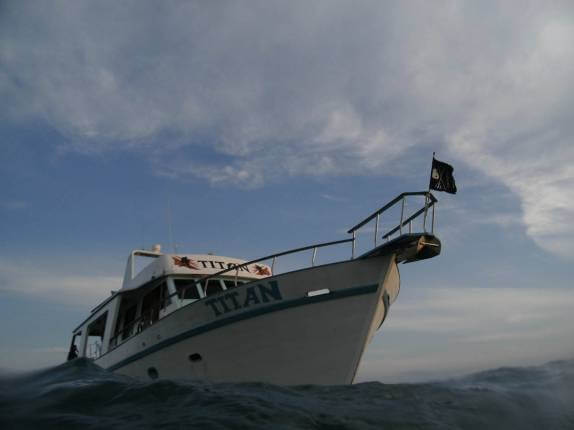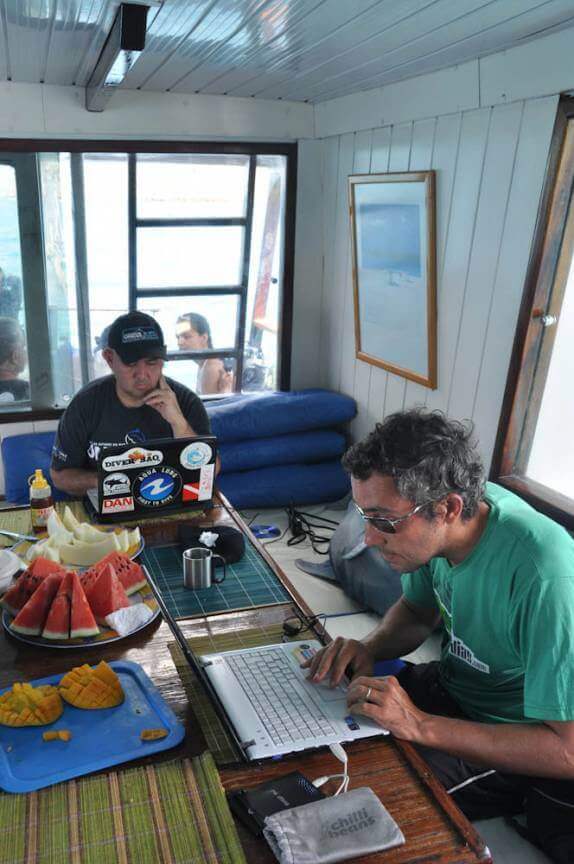Breathe
Every trained diver knows, or should know, the importance of breathing for diving. As our exhalation is much more important than the inspiration for a good performance of our physiology. The accumulation of CO2 in a wrong breath, expiring little and inefficiently, not only decreases our physical performance but has the potential to cause problems for our diving, such as increasing the air consumption of the cylinder exacerbated, drastically reducing the duration of the dive. diving, increasing the potential for narcosis, headaches, cramps and seasickness, among others. Conclusion: Poorly managed CO² can be a problem for the diver.
However, what many divers do not know is that greenhouse gas (GHG) emissions, especially excess CO2, are extremely harmful to our planet as well, as already mentioned in the post CO², GHG emissions and impacts on the oceans. Just think of the environmental damage that methane (CH4), produced by cattle in the livestock industry in the world, causes. These two gases act together for the greenhouse effect, global warming and acidification of the oceans, as already mentioned in the post above.
Talking about carbon footprint
I was talking a few years ago aboard Titãn, going from Caravelas to Abrolhos, about this topic with friends dive instructors Mitchel and Renato Santoro, talking about how we need to be less selfish in our personal and professional lives and that we need to promote each more and more greenhouse gas (GHG) compensation actions, inventorying and calculating the carbon footprint of each of us in relation to the activities we carry out in our daily lives.
So the three of us decided to write a text talking about the responsibility of all of us to calculate the carbon footprint of our diving activities and to carry out the appropriate carbon offsets, after all, the right to a balanced environment belongs to everyone, as stated in our Charter , the Federal Constitution of 1988, in its art. 225, guarantees everyone the right to a balanced environment.
Back in time and heading Abrolhos
A few years ago, on board the now no longer active Titan vessel, iconic in the history of Abrolhos:
Penguin Paulo Guilherme: I’m typing these lines on the notebook while navigating the Titan, and right now we are arriving at the Abrolhos archipelago, when I hear Mestre Dingão reducing the engines to dock, then immediately turning them off. Engines that, as in the vast majority of large vessels, burn diesel fuel, fossil fuel, the environmental villain of our decade.
So I went, at first out of pure curiosity, to talk to Mestre Dingão about the fuel consumption of the Titan’s two engines during a traditional 4-day expedition. Both consumption of the boat and the generator, cooking gas and gasoline from the boat’s outboard motor. Just while I’m talking to Mestre Dingão, Mitchel, from OSCIP ILAS – Latin American Institute of Sustainability – and Renato Santoro from Scuba Notícias approached the conversation and joined the conversation.
Evolving what has become a debate, we began to model the consumption of fossil fuels and carbon emissions from our activities on this trip, so that in return we can offset those from carbon emissions.
All united against global warming
Mitch and Renato: All citizens contribute to the worsening of global warming, be it through the energy they consume at home, the transportation options used during holidays and day-to-day activities, or the amount of waste produced. All the actions and activities of a company, industry, corporation or a simple citizen, emit Greenhouse Gases (GHG). Quantifying these emissions is the first step in a carbon offset program.
The carbon offset projects, in addition to generating a perception of a citizen company, demonstrate positivity towards other products that do not have eco-efficiency and sustainability activities. They also attest to socioenvironmental responsibility and add value to the brand, which has a competitive advantage in the market, generating recognition from customers and consumers. It can be used as a sustainability strategy for Corporate Governance, making the real value of the company increase because it demonstrates environmental respect.
Always the greenhouse effect...
Such quantification, that is, the calculation of GHG emissions, is carried out using the GHG Protocol, an internationally recognized scientific tool that allows assessing the emissions generated by the consumption of electricity, transportation of goods, displacement of employees, generation of waste, product elaboration, among others.
After this stage, a plan to reduce avoidable emissions is drawn up based on the adoption of best practices. To compensate for unavoidable emissions, the amount of GHG calculated is converted into the number of seedlings of species native to the Atlantic Forest. These trees will be responsible for preserving the soil, water, biodiversity and fixing the carbon emitted from the photosynthesis process.
When applying a carbon offset project for divers, we must take into account all the logistics of the activity related to diving, such as displacements, electricity consumption, water, waste generation, among other factors that contribute to greenhouse gas emissions (GHG). We divers, who by nature share a strong environmental feeling, should be increasingly concerned with the impacts we cause every time we go on a dive. It is up to us to publicize and support voluntary actions such as these projects, so that more and more people become aware of the importance of neutralizing the impacts they cause.
It always pays to compensate!
The dive trip from November 2nd to 5th to Abrolhos, on Titan, was duly quantified and compensated. 4.60 ton / eq of CO2 were emitted, making it necessary to plant 31 seedlings of native trees for their compensation. The trees were planted in the Extractive Reserve of Cassurubá, with the seal of the company Palmares Geoprocessamento Ambiental, from Paraná. To learn more about carbon offset projects, access the website www.palmaresgeo.com.br and the blog www.programarecompense.blogspot.com.




